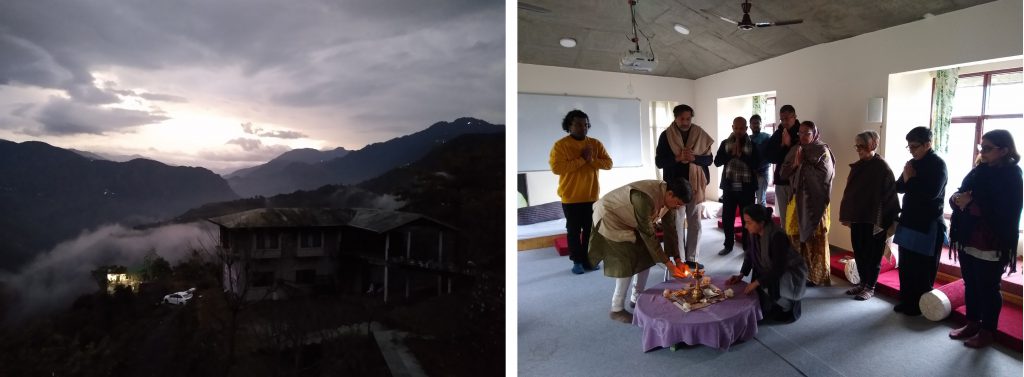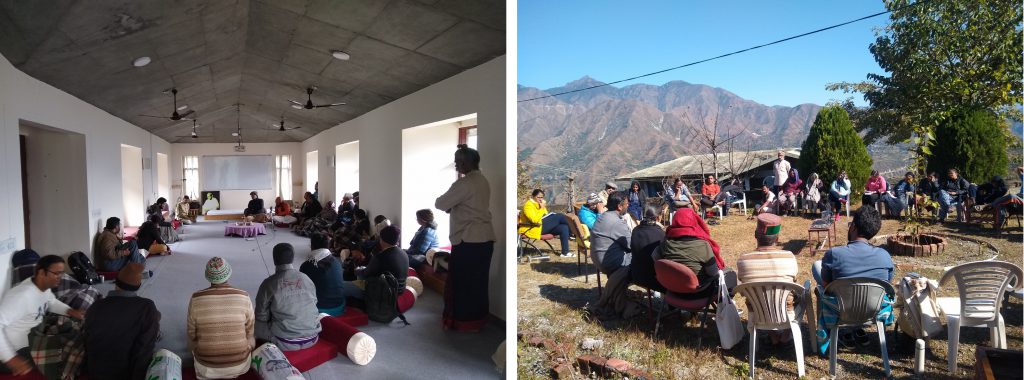

(Photos from the 5 day meeting at SIDH campus at Kempty. 6th to 10th December 2021. With around 30 participants)
I’ve been thinking on this word ‘baithak’. Pawan ji has used it often in conversations. The gathering in SIDH, although began as a retreat but probably evolved into a baithak of ‘samaan-dharmi’ people from different parts of India.
I have begun to realize the importance of gathering samaan dharmi-s on one platform. As an individual, for me a gathering of like-minded strangers feels reassuring. Moreover, it feels that the conversations can rise to a certain seriousness. Otherwise, talking amidst a crowd often feels like going round in circles over unbaked issues and sentiments. This gathering did achieve a certain depth, and as a result there were signs of a baithak emerging.
It dawned upon me that almost no one asked questions with the intent of breaking the conversation. I thought it was amazing that all questions asked further lead to probing in greater depths. The baithak feels like one sentence completed over 5 days; collectively constructed by a group of 30 people from different parts of the country (many of whom were strangers to one another). Now that the sentence has been formed and we have returned home, hopefully we will re-look at the sentence in our individual environment.
What is worth doing in these times? I think, creating a space for conversations on Indic tradition is one important thing to do. A space of affinity, of confidence and of hope towards tradition is needed. We must remove the sense of shame and guilt we carry collectively. We must realize our self-worth as Indians. And then actualize it. We must talk to each other for the purpose.
I think, the two important tools we have at our disposal are recalling and reflecting. I see immense potential in recalling our collective past, a past which is anādi (beginning-less). And then to reflect upon it, sometimes collectively but most of the times individually. I see them as important tools for me to build a ‘sense of past’ (itihāsa). Probably, this is one way to find our roots. The inverted asvattha tree (given in Bhagwat Gita) with its roots coming from sky and branches/fruits available on earth symbolizes man. As men, we derive our self-worth from the sky- the realm of memories, judgements and ideation (par-loka).
